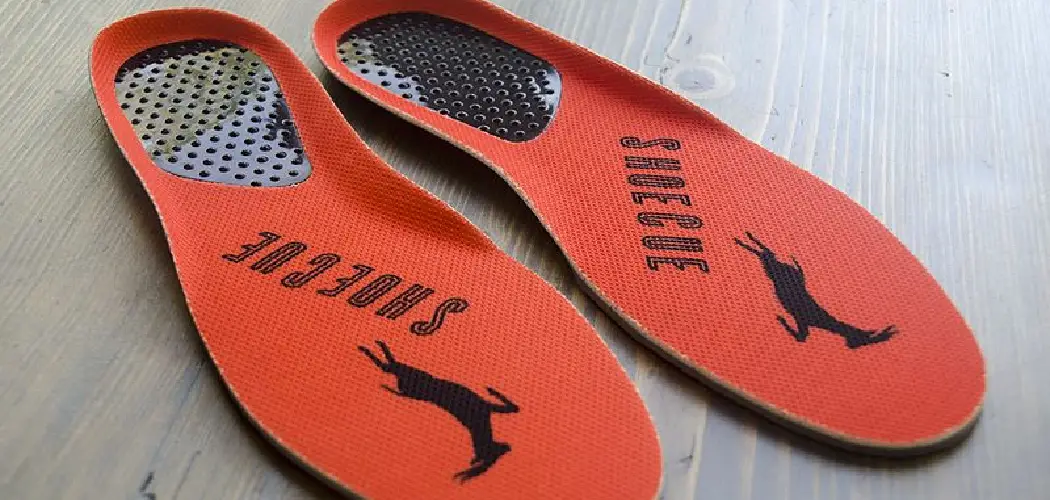Shoe size can be a difficult thing to determine. Depending on the shoe style, some can run larger or smaller than others. Insole measurement is the most accurate way to get your shoe size. Athletes and people who have to stand all day for work often have custom-made insoles for their shoes.
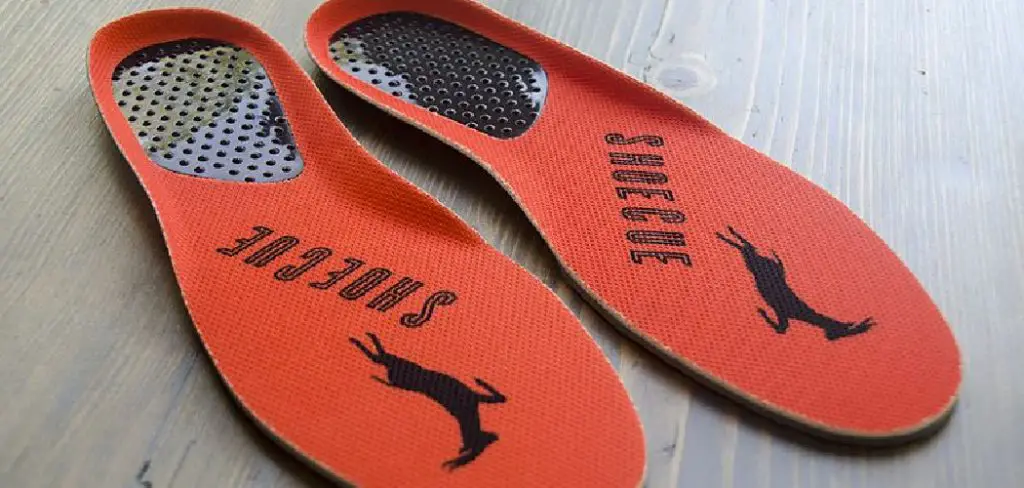
These insoles help with comfort and alignment. If you are in the market for new insoles and do not know how to measure the insole of your shoe, don’t worry! This may seem like a daunting task, but we are here to help! This article will teach you how to measure insole of shoe correctly. Read on for a step-by-step guide.
Needed Materials:
Before we get started, you will need a few materials. These include:
A Piece of Paper Larger Than Your Foot:
A regular sheet of paper will do just fine. Just make sure it is bigger than your foot.
A Ruler:
You can use any ruler as long as it measures in inches or centimeters.
Pen or Pencil:
Any writing utensil will work. This will be used to trace your foot onto the paper.
A Pair of Shoes:
You will need the shoes you want to measure for insoles. Make sure they are clean and don’t have any insoles already inserted.
8 Simple Ways on How to Measure Insole of Shoe:
1. Look for Insole Size Markings:
Many shoes will have insole-sized markings directly on the insole. These markings can be in words or numbers and will help you determine the correct size. If the insole size is not visible, you can measure it manually using the following steps. You can also check the shoe manufacturer’s website for sizing charts specific to their brand.
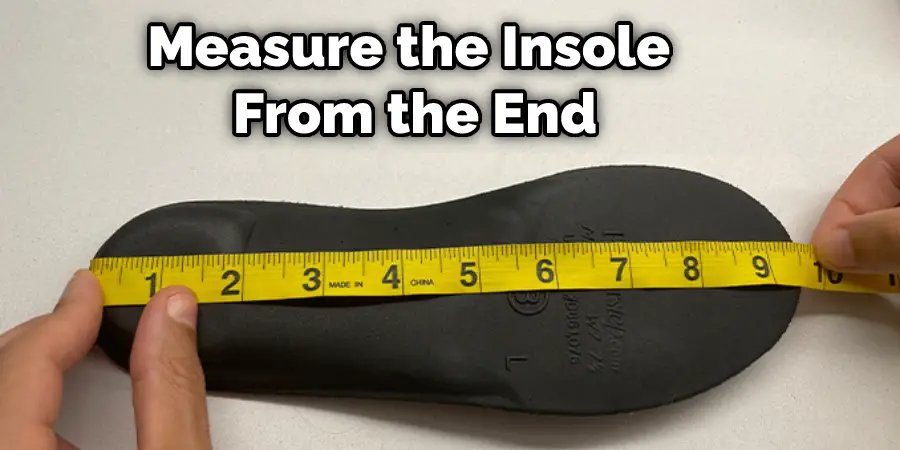
2. Compare Insole Size to Shoe Size:
If there are no markings on the insole, you can compare the insole size to the shoe size. Typically, the insole will be about 1/2 size smaller than the shoe size. So, if you are a size 8, the insole size would be 7-1/2. This may vary depending on the brand, so be sure to check with their sizing chart. But keep in mind that this is just a rough estimate and may not always be accurate.
3. Use a Ruler:
If there are no markings on the insole and you don’t have a pair of shoes to compare sizes, you can use a ruler to measure the insole. First, measure the insole from the heel to the toe and then multiply by 2 to get the insole length. For example, if the insole measures 10 inches, the insole length would be 20 inches.
4. Use a Tape Measure:
Another way to measure the insole is by using a tape measure. Wrap the tape measure around the widest part of your foot and then measure the insole from the end of the toe to the heel. Write this measurement down and compare it to the size chart to find your corresponding size. This method is more accurate than using a ruler because it takes into account the width of your foot.
5. Check the Arch Height:
Arch height can be important when measuring the insole. To measure it, use a ruler to find the distance from the heel to the ball of your foot. Then, divide that number by three and you will have the arch height. This is important to know because some insoles are designed for different arch heights, so make sure you select the right one for your foot.
6. Check the Toe Box Depth:
The toe box depth is also important when measuring the insole. Use a ruler to measure the distance from the longest toe to the heel. Then, subtract half an inch from this number. This will be the toe box depth. This measurement is important because some insoles are designed to be thicker or thinner in the toe box area.
7. Check the Heel Height:
The heel height is also an important measurement when buying a new pair of shoes. Use a ruler to measure the distance from the ground to the tallest point on the heel to measure it. This will help you determine if the shoes are the right height. If the shoe’s heel is too high, it can cause discomfort and strain on your feet.
8. Measure with Hand:
Another way to measure the insole is by using your hand. First, place your hand on the floor with your palm facing down. Then, place the heel of your shoe against the base of your thumb. Next, slide your hand forward until the ball of your foot is touching the tip of your index finger. This is how long the insole should be.
A Detailed Guide on How to Measure Insole of Shoe
Step 1: Before You Measure the Insole
Before you measure the insole of your shoe, you will need to gather a few materials. First, you will need a ruler or tape measure. You will also need a pair of shoes that fit you well and have the same type of insole as the shoe you are measuring. If you don’t have a pair of shoes to compare sizes, you can use a ruler to measure the insole.
Step 2: Look for Insole Size Markings
Many shoes will have insole-sized markings directly on the insole. These markings can be in the form of words or numbers and will help you determine the size of your insole. If your shoes don’t have any insole size markings, you can move on to Step 3. You can also check the manufacturer’s website for sizing charts specific to their brand.
Step 3: Trace Foot on Paper
If you don’t have a pair of shoes to compare sizes, you can use a ruler to measure the insole. First, trace your foot on a piece of paper. Make sure to trace your entire foot, including the heel. Once you have traced your foot, use a ruler to measure its length and width. Write these measurements down so you can use them later.
Step 4: Measure the Insole of the Shoe
Now that you have the measurements of your foot, it’s time to measure the insole of your shoe. Place your shoe on a flat surface and place the ruler or tape measure next to the insole. Make sure to measure the insole from one end to the other. If the insole is curved, measure it at its widest point. Write down this measurement.
Step 5: Measure Foot Length
Once you have the shoe’s insole, it is time to measure your foot length. This can be done by measuring the distance from the back of your heel to the tip of your longest toe. To get an accurate measurement, use a ruler or a tape measure.
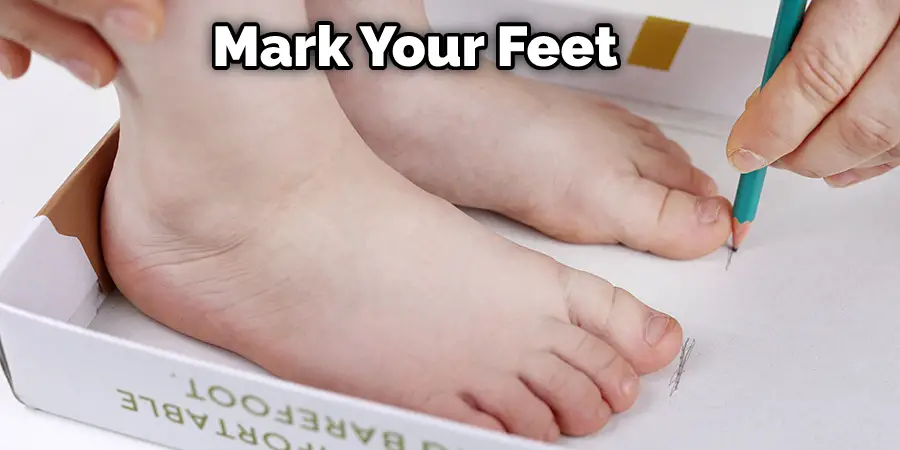
If you do not have either of these items, you can also use a piece of string or a piece of paper and then use a ruler to measure the length of the string/paper. Once you have your foot length measurement, you can use it to find your shoe size. You can either consult a shoe size chart or go to a store that sells shoes and have them measure your foot for you.
Step 6: Measure the Width of the Foot
Measure the width of your foot at the widest point. This can be done by using a ruler to measure the distance between the outer edges of your feet. Record this measurement in inches or millimeters, depending on the unit of measurement you are using.
If you are having trouble measuring the width of your foot accurately, try using a piece of paper or cardboard to trace around your foot. Then, a ruler was used to measure the distance between the two longest points on the traced outline. This will be your width measurement.
Step 7: Measure Heel Height
Heel height is another important measurement to take when sizing a shoe. To measure heel height, use a ruler to measure the distance from the bottom of the heel to the top of the heel. This will give you an accurate measurement of how high the heel is. Make sure to take this measurement on a flat surface and not while you are wearing the shoe. Otherwise, you may not get an accurate measurement.
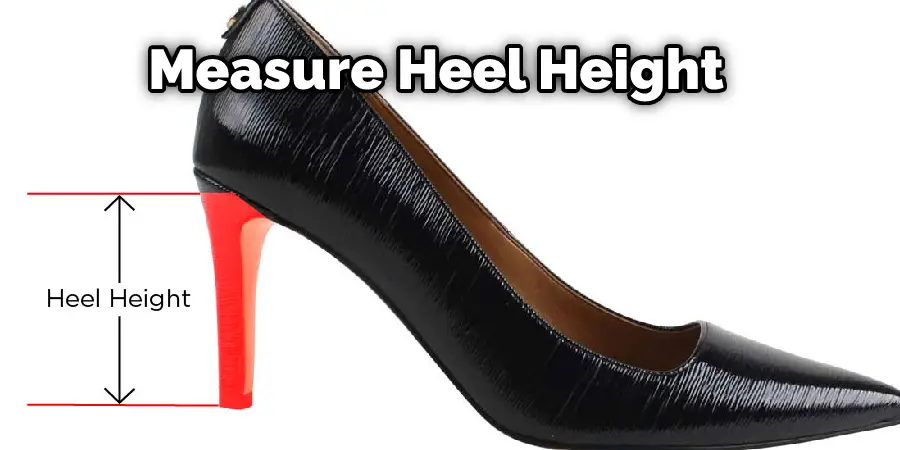
Step 8: Compare Sizing Charts
Once you have measured the length and width of your feet and the height of the heel, you can use a sizing chart to find the correct size shoe. There are many different sizing charts available online, so be sure to compare the measurements of your feet to the measurements of the shoes you are interested in.
Some sizing charts are specific to a certain shoe brand, while others are more general. It is important to find a sizing chart that corresponds to the shoe brand you plan to purchase, as each brand may have different measurements.
Step 9: Find Insole Size
Now that you have all of your measurements, it is time to find your insole size. To do this, you will need to find the measurement corresponding to your feet’s length and width.
The size will be written as a number or a word in most cases. For example, if you use inches as your measurement unit, the size will be written as a number (e.g., 9, 10). If you are using millimeters as your unit of measurement, the size will be written as a word (e.g., Medium, Large).
Step 10: Find Your Perfect Fit
Once you have determined your insole size, it is time to find the perfect fit. This can be done by trying different shoes at a store or ordering shoes online. When trying on shoes at a store, bring the sizing chart with you. This will help you compare the shoe’s measurements to your own measurements.
If ordering shoes online, be sure to read the reviews before purchasing. This will give you an idea of how the shoe fits other people. You may also want to order a size up or down, depending on the shoe’s fit.
Tips and Warnings:
- Make sure you have an accurate measuring tape before you start.
- Place the shoe on a flat surface and measure the insole from heel to toe.
- Write down the measurement in inches or millimeters.
- Compare your measurement to the size chart on the shoe’s packaging to find your correct shoe size.
- If you’re not sure what size to order, it’s best to go with the next size up.
- Always try on shoes before purchasing them to make sure they fit correctly.
- If the shoe’s insole feels too tight or too loose, it’s likely not the right size for you. Consider trying a different size or style.
- Keep in mind that sizes can vary between brands, so it’s important to measure each shoe you are interested in individually.
- If ordering online, make sure the website has a good return policy in case the shoes do not fit properly.
- Remember to always measure both feet, as one foot may be slightly larger than the other.
- Do not solely rely on your shoe size from previous purchases, as sizes can vary over time and between brands.
- If you have any concerns about sizing or fit, consult a professional shoe fitter for assistance. They will be able to provide guidance and help you find the perfect fit for your feet.
- Don’t forget that different types of shoes (such as sandals or boots) may have different fitting guidelines, so consider this when measuring and selecting your size.
- As feet can change in size and shape over time, it is recommended to measure your feet at least once a year to ensure you have the most accurate shoe size for maximum comfort and support.
- Wearing ill-fitting shoes can lead to discomfort, pain, and even injury. It’s important to find the right size for your feet to avoid these issues.
- Don’t be afraid to ask for help from a sales associate or customer service representative if you have any questions about sizing or fit. They will be happy to assist you in finding the perfect shoes for your needs.
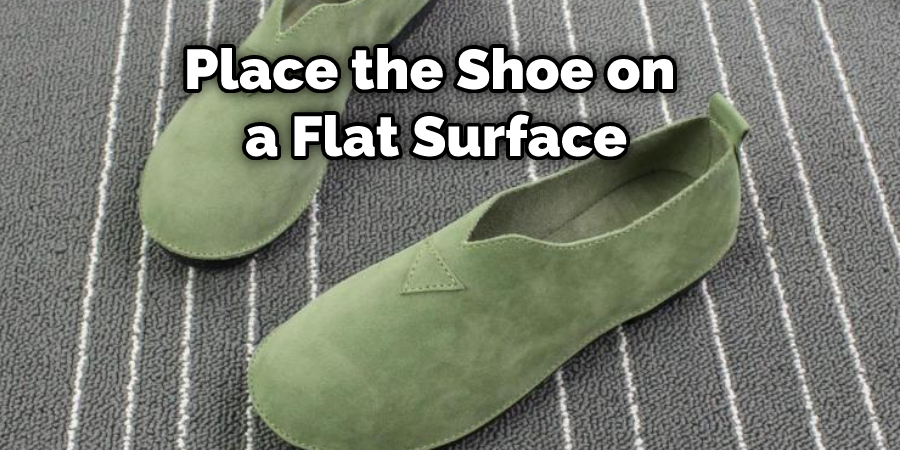
Frequently Asked Questions:
Q: Can I Use a Measuring Tape to Measure My Feet?
A: Yes, a measuring tape is a great tool for accurately measuring the length and width of your feet. You can also use a ruler or string if you do not have a measuring tape. It is important to use a measuring tool that can provide accurate measurements in inches or millimeters. However, keep in mind that using different measuring tools may result in slightly different measurements, so it’s best to stick with one type of tool for consistency.
Q: If I Know My Shoe Size, Do I Still Need to Measure My Feet?
A: Yes, it is always best to measure your feet before purchasing new shoes. As mentioned earlier, foot size and shape can change over time, so relying solely on your shoe size from previous purchases may not provide an accurate fit. Different brands and styles of shoes may also have varying sizing, so it’s important to measure each shoe individually.
Q: What If My Feet are Different Sizes?
A: It is common for one foot to be slightly larger than the other. In this case, it is recommended to base your shoe size on the measurement of your larger foot to ensure a comfortable fit. You may also want to consider purchasing shoes with adjustable straps or laces to accommodate any differences in foot size.
Q: How Do I Know If the Shoe Fits Correctly?
A: The shoe should feel snug but not too tight on your foot. You should still have some room at the front of the shoe, about half an inch to a full inch, to allow for natural movement of your toes. The heel of the shoe should also fit comfortably without slipping out when walking. If you notice any discomfort or pain while trying on shoes, it is likely not the right fit for you. It’s important to take your time and try on multiple sizes and styles to find the perfect fit for your feet.
Q: Can I Return Shoes That Do Not Fit?
A: It is important to check the return policy of the store or website before purchasing shoes. Most reputable stores will have a return or exchange policy for shoes that do not fit properly. Be sure to keep the original packaging and tags in case you need to make a return or exchange. Overall, it’s best to take your time and carefully consider your measurements and fit to avoid the hassle of returning or exchanging shoes.
Overall, finding the perfect fit for your feet may take some trial and error, but it is well worth it for comfortable and supportive shoes. Remember to measure regularly and consider factors such as foot size, shape, and different types of shoes when selecting a size. Don’t hesitate to seek assistance from professionals if needed.
Conclusion:
Measurement of the insole is important because it can help to ensure that shoes are fitting properly and provide the correct level of support. When a shoe does not fit well, it can cause blisters, calluses, and even long-term issues like bunions or hammertoes. To get an accurate insole measurement, you will need to use some simple tools and techniques.
The first step is to remove the old insole from the shoe. If it is difficult to remove, you can try using a sharp object like a knife or scissors to cut along the edge of the insole. Be very careful when doing this not to damage the shoe itself. We hope this blog post has been helpful to guide you on how to measure insole of shoe. If you have any questions or want to know more, then feel free to comment below!
You Can check it Out to Waterproof Suede Boots

